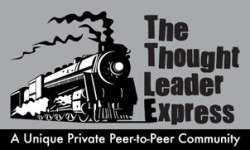The fundamental shift AI brings to 401k education is its capacity to tailor learning experiences to the unique profile of each individual saver.
Education

While the current landscape is still taking shape, the trajectory of AI’s influence is undeniable. There’s no question 401k AI is moving in a direction where it will take on a critical role in moving beyond averages to identify specific savings gaps and in enabling more precise, effective fiduciary interventions.

By proactively addressing these critical 401k plan sponsor questions, sponsors can enhance their plans, protect participants, and shield themselves from unnecessary fiduciary exposure.

Advisors do more than plot portfolios. They calm nerves, making them frontline warriors against volatility panic, turning “what if” into “we’ve got this.”

For ERISA fiduciaries, the challenge is clear: move beyond the default, and design a 401k plan that truly serves the diverse needs of its participants. In doing so, you not only safeguard retirement incomes but also reinforce the trust placed in you by those relying on your expertise.

As recessions become an inevitable part of the economic cycle, the responsibility of ERISA fiduciaries and 401k plan sponsors is clear. For plan sponsors, the answer lies in a proactive, hands-on approach. It’s about continuously reviewing plan design, investing in technology, and fostering a culture of financial literacy among participants.

The tangled web of ERISA regulations grows worse each year. Is this too much for companies responsible for maintaining 401k plans?

It’s tempting to turn your attention to your company, some academic theory, or even—hush!—“best practices.” The truth is, as a fiduciary, you only have one job.

This has been the most challenging of best practices. It has evolved over the years from “you can’t do that” to “you need to do that.” What does it take to make it better? Has the technology environment changed in such a way as to address long-standing obstacles.
Here’s the real conundrum faced by 401k plan sponsors: They realize they don’t have the expertise to administer the plan. So, what do they do? It’s only natural they do seek outside help for their retirement plan. The trouble is, not all third parties are created equal. But does the average plan sponsor know this?










